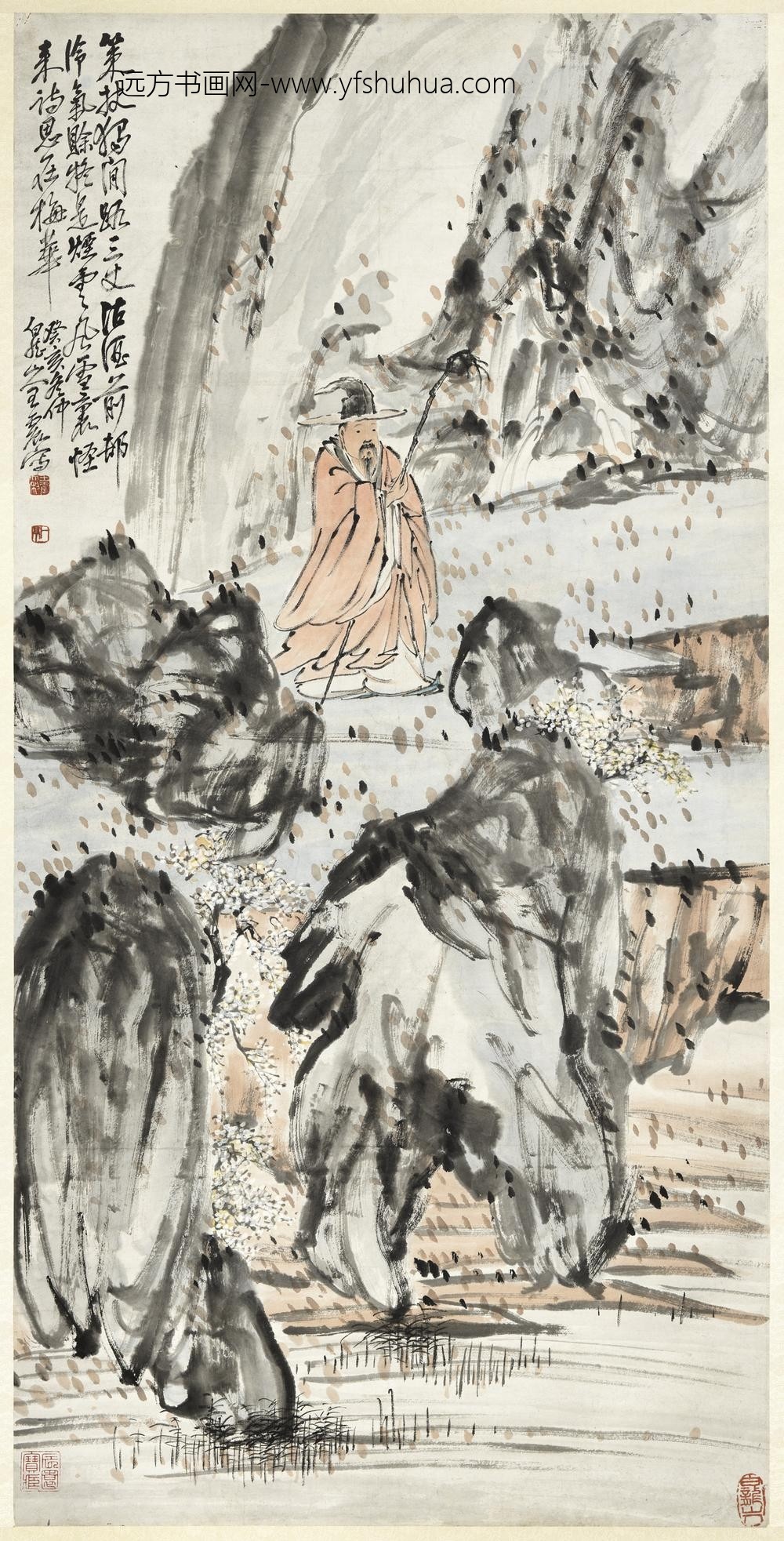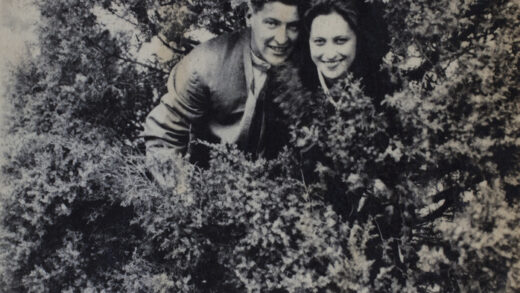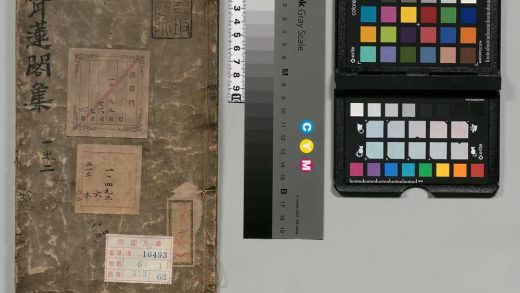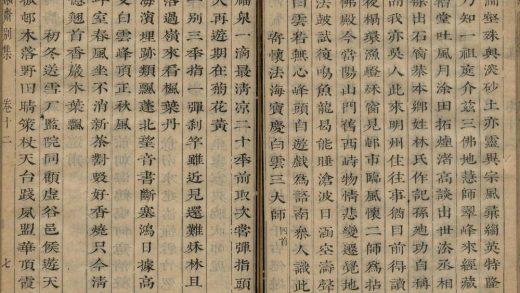【作品基本信息】
| 作者 | 王震 |
| 品名 | 策杖诗思图轴 |
| 朝代 | 清代 |
| 文件大小 | 18.01MB |
| 分辨率(DPI) | 300×300 |
| 像素大小 | 1748×3436 |
| 尺寸(CM) | 14.79×29.09 |
| 创作时间 | 中华民国十二年(1923) |
| 作品数量 | 1 |
| 作品收藏 | 台北故宫博物院 |
| 图片格式 | 默认提供TIF和JPG两个版本 |
基本数据
| 藏品类型 | 绘画 |
| 品名 | 民国王震策杖诗思 轴 Poetic Thoughts While Walking with a Staff |
| 分类 | 绘画 |
| 作者 | 王震 |
| 创作时间 | 中华民国十二年(1923) |
| 数量 | 一轴 |
典藏尺寸
| 【位置】 | 【尺寸】(公分) |
| 本幅 | 111.1×55.7 |
| 全幅 | 111.1×67.9 |
质地
| 【质地位置】 | 【质地】 |
| 本幅 | 纸 |
题跋资料【题跋类别】【作者】【位置】【款识】【书体】【全文】作者款识王震本幅
草书策杖独闲路三丈。沽酒前邨冷气赊。疑是烟云风雪里。怪来诗思在梅华。癸亥(公元一九二三年)冬仲。白龙山人王震写。印记:
王震大利、一亭、白龙山人
印记资料
| 【印记类别】 | 【印记】 |
| 收传印记 | 辰园宝藏 |
主题
| 【主题类别】 | 【主题(第一层)】 | 【主题(第二层)】 | 【主题说明】 |
| 主要主题 | 山水 | ||
| 其他主题 | 山水 | 奇石 | |
| 次要主题 | 人物 | 高士(士人、隐士) | |
| 其他主题 | 器用 | 拐杖 | |
| 其他主题 | 山水 | 江河、湖海 | |
| 其他主题 | 花草 | 梅(白.红.蜡梅) |
技法
| 【技法】 | 【技法细目】 |
| 写意 |
参考数据
| 【类别】 | 【参考数据】 |
| 收藏着录 | 蔡辰男先生捐赠书画目录,页89、129 |
| 内容简介(中文) | 王震(公元一八六七-一九三八年),浙江吴兴人,寄居上海。字一亭,别署白龙山人。工书画,善人物、花鸟、走兽、山水,以佛像为佳。早年得徐小仓指授,后与任伯年、吴昌硕友善,风格则与吴最称相近。居沪时,曾积极参与艺坛、慈善、佛教等活动,并因长期服务日清轮船公司,遂得享多重令誉,为上海著名之实业家与画家。 本幅运雄健之笔,写怪石流泉,梅华夹道,士人戴笠,独行其间。虽赋色简淡,然墨彩交融,点染随兴,自成一派恣肆生动的意趣。本幅为蔡辰男先生捐赠。 |
| 内容简介(英文) | Wang Chen (style name Yi-t’ing; also known as Pai-lung shan-jen) was a native of Wu-hsing, Chekiang. He was skilled in calligraphy and painting, excelling at painting figures, birds and flowers, beasts, and landscapes. His paintings of Buddhist figures were particularly fine. In his early years he received in- struction from Hsu Hsiao-ts’ang and later became good friends with Jen Yi (1840-1895) and Wu Cg’ang-shih (1844-1927). Wang’s painting style most closely follows Wu Ch’ang-shih’s. When he was living in Shanghai, he participated in artistic, philanthropic, and Buddhist religious activities, and because of a long period of service at the Jih-ch’ing Steamship Co., he gradually enjoyed many types of fame, becoming a renowned entrepreneur and painter. Powerful brushwork has been used to depict strange stones, a running spring, and a plum-blossom-lined path. A gentleman wearing a bamboo hat strolls alone through the scene. Although the application of color is simple and light, the fusion of the ink and colors and the free application of wash have imbued this work with an unrestrained and lively flavor. This painting was donated to the Museum by Mr. Ts’ai Ch’en-nan. |
| 内容简介(中文) | 王震(公元一八六七—一九三八年),浙江吴兴人,寄居上海,为上海著名之实业家。字一亭,别署白龙山人。工书画,善人物、花鸟、走兽、山水,以佛像为佳。早年得徐小仓指授,后与任伯年、吴昌硕友善,风格则与吴最称相近。居沪时,曾积极参与艺坛、慈善、佛教等活动,遂得享多重令誉。 本幅为蔡辰男先生捐赠,运雄健之笔,写怪石流泉,梅华夹道,士人戴笠,独行其间。此帧赋色简淡,然墨彩交融,点染随兴,自成一派恣肆生动的意趣。 |
| 内容简介(英文) | Wang Zhen (style name Yiting; also known as Bailong shanren) was a native of Wuxing, Zhejiang, who resided in Shanghai, where he became a renowned businessman. He also excelled at painting and calligraphy, being gifted at figures, birds and flowers, animals, landscapes, and especially Buddhist images. In his early years he received instruction from Xu Xiaocang and later befriended Ren Bonian and Wu Changshi, his painting style most closely resembling that of Wu’s. While living in Shanghai, Wang actively took part in art circles, philanthropic activities, and Buddhist events, achieving renown in many fields. This work, donated to the National Palace Museum by Mr. Cai Zhennan, features powerful brushwork used to depict strange rocks, a running brook, and a path lined with plum blossoms. A gentleman wearing a bamboo-leaf hat strolls alone in the scene. The colors are simple and light as they fuse with the ink that seems to have been freely applied in washes, imbuing this work with an unrestrained and lively manner. |
| 参考书目 | 1.刘芳如,〈民国王震策杖诗思〉,收入刘芳如主编,《十九世纪末期中西画风的感通之二--国立故宫博物院所藏同时期名家作品展》(台北:国立故宫博物院,1993年初版),页140。 2.刘芳如,〈近代绘画在中国 — 「十九世纪末期中西画风的感通」展出前言〉,《故宫文物月刊》,第119期(1993年2月),页22。 |
【作品展示】





